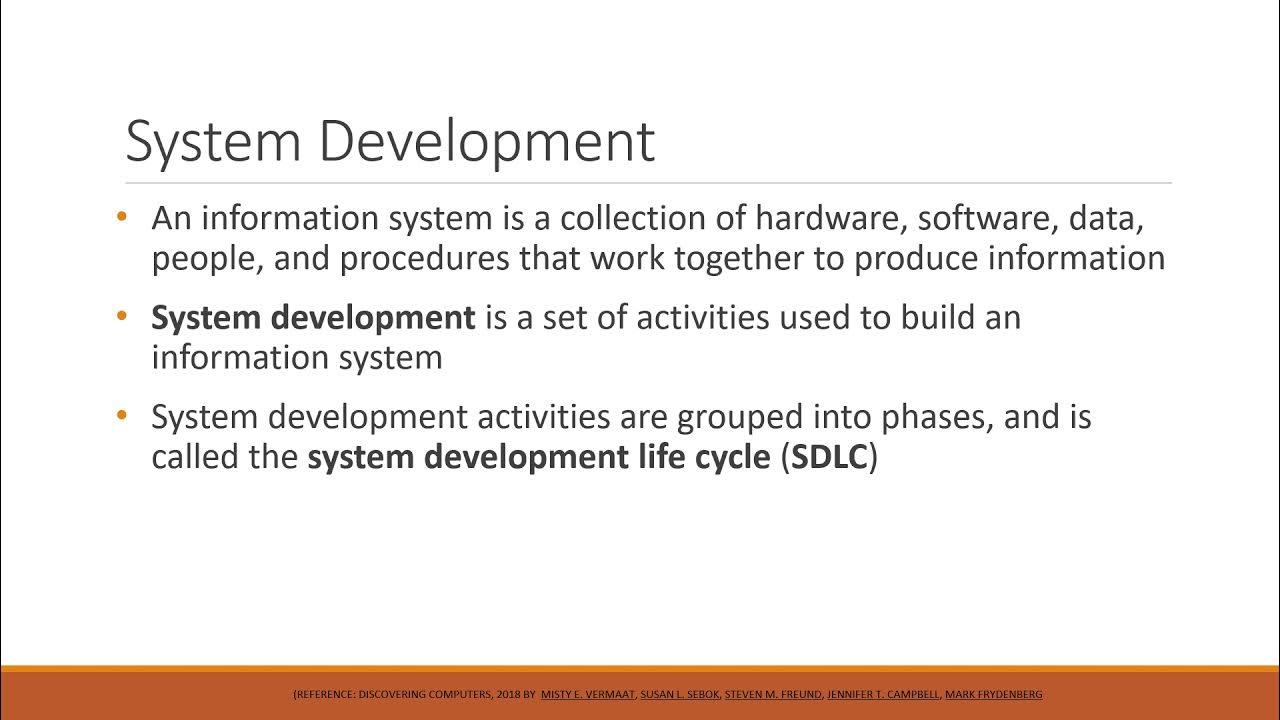Sistem Manajemen Database Ke 2
Summary
TLDRThis video script covers key concepts in management information systems, focusing on database management. It explains the process of data processing, including input, processing, and output stages. The script discusses various data processing methods, file organization models (hierarchical, network), and traditional vs. contemporary database management systems. It also highlights database system architectures, such as single, centralized, and distributed systems. The lesson aims to clarify complex technical concepts, such as data abstraction and system architecture, to help students understand the organization and management of data in modern information systems.
Takeaways
- 😀 Electronic Data Processing (PDE) refers to converting raw data into useful information through a systematic process of input, processing, and output.
- 😀 The data processing cycle can expand to include origination, distribution, and storage, with each step contributing to the organization of data.
- 😀 Data processing methods include batch processing (delayed processing) and immediate processing (real-time processing).
- 😀 Data management involves two key languages: definition language (for structuring data) and manipulation language (for retrieving and modifying data).
- 😀 The hierarchical model of data organization structures data like a tree, while the network model allows for more complex parent-child relationships.
- 😀 Traditional database systems store data separately, leading to inefficiencies, while contemporary systems integrate data for improved access and analysis.
- 😀 Data representation has three levels: physical (storage), conceptual (logical structure), and presentation (how data is shown to users).
- 😀 File types in database systems range from master files to backup copies, crucial in maintaining data integrity during processing.
- 😀 Creating a database involves assessing data needs, which can be done either by problem orientation or organizational model approach.
- 😀 Database architecture can be centralized (data stored in one location), distributed (data spread across multiple locations), or single (data and systems are contained within one system).
- 😀 Understanding database models and structures is key to efficiently managing data in modern information systems, optimizing both data organization and retrieval.
Q & A
What is the focus of the lecture discussed in the transcript?
-The lecture focuses on 'Database Management Systems,' discussing various aspects such as data processing, data organization models, and database architectures.
What is meant by 'electronic data processing' (PDE)?
-Electronic Data Processing (PDE) refers to the process of converting raw data into useful information through computer-based methods.
What are the three basic steps of data processing mentioned in the lecture?
-The three basic steps of data processing are input, processing, and output.
What is the difference between batch processing and immediate processing?
-Batch processing involves a delay in data processing, while immediate processing refers to the processing of data as soon as it is received.
What are the two main languages used for data manipulation and management?
-The two main languages for managing and organizing data are 'Definition Language' and 'Manipulation Language.'
Can you explain the hierarchical model of data organization?
-The hierarchical model organizes data in a tree-like structure where each parent can have multiple child nodes, similar to a family tree.
What is the network model of data organization?
-The network model allows each parent node to have multiple child nodes, and child nodes can also have multiple parent nodes, forming a more interconnected structure.
How does traditional data organization differ from contemporary database organization?
-Traditional data organization tends to have isolated, separate data, whereas contemporary database organization integrates data into a unified system, enhancing efficiency and accessibility.
What are the three levels of data abstraction in a database system?
-The three levels of data abstraction are: 1) Presentation level, 2) Conceptual level, and 3) Physical level.
What are the two main stages in creating a database?
-The two main stages in creating a database are: 1) Determining the data requirements, and 2) Entering the data into the system.
What is the difference between a centralized and a distributed database system?
-In a centralized database system, the database is stored in a single physical location, whereas in a distributed database system, the database is distributed across multiple locations.
Outlines

This section is available to paid users only. Please upgrade to access this part.
Upgrade NowMindmap

This section is available to paid users only. Please upgrade to access this part.
Upgrade NowKeywords

This section is available to paid users only. Please upgrade to access this part.
Upgrade NowHighlights

This section is available to paid users only. Please upgrade to access this part.
Upgrade NowTranscripts

This section is available to paid users only. Please upgrade to access this part.
Upgrade NowBrowse More Related Video

Manajemen Produksi dan Operasi (Pengantar Bisnis)

Mostly asked questions in Database Management System (or DBMS) - Top 10 | One Night Study

Introduction to Database Management Systems

DATA INFORMASII DAN SISTEM INFORMASI (Materi Dasar MPLB Fase E, Elemen 7 Bagian 1)

LATIHAN SOAL CPNS PPPK 2024 PENGELOLA LAYANAN OPERASIONAL KOMPETENSI TEKNIS/BIDANG/SKB PART 1

7 DC18 M11 DBASE
5.0 / 5 (0 votes)